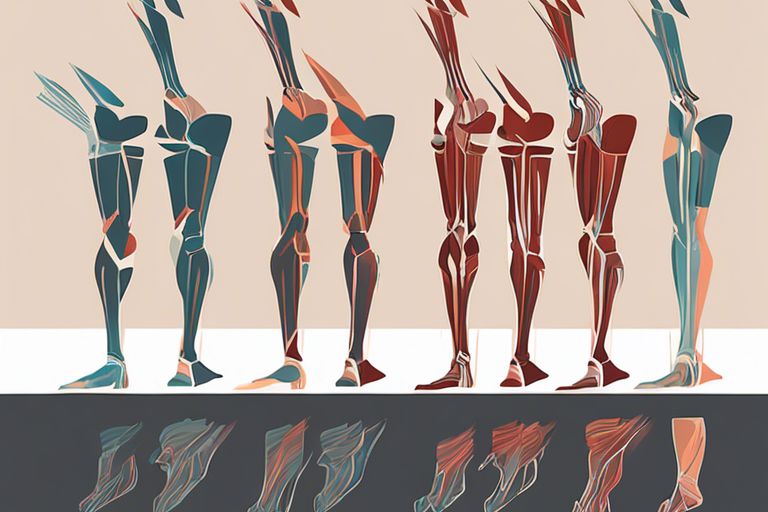Can walking help lower blood pressure?
Have you ever wondered if incorporating regular walking into your daily routine could have a positive impact on your blood pressure? High blood pressure, also known as hypertension, can lead to serious health complications if left untreated. In this informative blog post, I will delve into the potential benefits of walking for lowering your blood pressure, as well as provide you with expert insights and tips on how to incorporate walking into your lifestyle in order to improve your overall cardiovascular health.
Understanding Blood Pressure
To understand the role of walking in lowering blood pressure, it’s important to have a basic understanding of what blood pressure is and how it is measured. Blood pressure is the force of blood against the walls of your arteries as your heart pumps it around your body. It is typically measured in millimeters of mercury (mmHg) and recorded as two numbers: systolic pressure over diastolic pressure.
Defining Systolic and Diastolic Blood Pressure
When your heart beats, it contracts and pushes blood through the arteries, causing the highest blood pressure of the cardiac cycle. This is known as the systolic blood pressure. On the other hand, when the heart is at rest between beats, the pressure in the arteries drops and this is known as the diastolic blood pressure. Together, these two numbers provide a comprehensive picture of your overall blood pressure.
The Impact of High Blood Pressure on Health
If left uncontrolled, high blood pressure can lead to serious health problems such as heart attack, stroke, and kidney disease. It can also contribute to the development of coronary artery disease, atrial fibrillation, and other conditions. High blood pressure can put an additional strain on your heart, leading to its enlargement or thickening of the heart muscle, which can eventually lead to heart failure. It is important to take steps to manage and lower your blood pressure to reduce the risk of these health complications.
Walking as a Form of Exercise
The act of walking is often underestimated as a form of exercise, but it can be extremely effective in improving your overall health, including helping to lower your blood pressure. Walking is a low-impact activity that almost anyone can do, and it is an excellent way to get your body moving and your heart pumping.
Benefits of Physical Activity in Hypertension Management
Regular physical activity, such as walking, is essential for managing hypertension. When you engage in physical activity, your heart becomes stronger, allowing it to pump blood more efficiently and reducing the force on your arteries, which helps lower your blood pressure. Additionally, physical activity can help you maintain a healthy weight, which is also beneficial for managing hypertension.
Characteristics of Walking as an Ideal Exercise
Walking is an ideal form of exercise for lowering blood pressure for several reasons. First, it is low-impact, meaning it is gentle on your joints and muscles, reducing the risk of injury. Second, it is easily accessible and can be done almost anywhere, making it convenient for anyone with a busy schedule. Finally, walking can be easily incorporated into your daily routine, whether it’s simply taking the stairs instead of the elevator or parking farther away from your destination.
Clinical Evidence
However, let’s dive into the clinical evidence that supports the idea that walking can help lower blood pressure. Several studies have been conducted to investigate the relationship between walking and blood pressure reduction, shedding light on the potential benefits of this simple yet effective form of exercise.
Studies on Walking and Blood Pressure Reduction
Research has shown that regular walking can lead to a decrease in both systolic and diastolic blood pressure. A study published in the journal Hypertension found that walking for just 30 minutes a day can help lower blood pressure in people with prehypertension. This demonstrates the powerful impact that incorporating a daily walk into your routine can have on your blood pressure levels.
Mechanisms Behind Walking’s Impact on Blood Pressure
When you engage in physical activity like walking, your blood vessels dilate, allowing for improved blood flow and lowered resistance. Additionally, walking helps to reduce the stiffness of your arteries, which can contribute to high blood pressure. Furthermore, regular walking can also lead to weight loss, which in turn can have a positive effect on your blood pressure levels. These physiological mechanisms illustrate how walking can directly impact and lower your blood pressure.
Practical Advice for Incorporating Walking
Despite the busy nature of your daily life, incorporating regular walking into your routine is essential for maintaining a healthy blood pressure. Fortunately, there are many practical ways to make walking a part of your everyday life.
Developing a Sustainable Walking Routine
When developing a sustainable walking routine, it’s important to start small and gradually increase the duration and intensity of your walks. Begin by setting achievable goals, such as walking for 10 minutes each day, and slowly increase the duration as your fitness improves. To ensure sustainability, find a walking route that is convenient and enjoyable, whether it’s around your neighborhood, at a nearby park, or on a treadmill at the gym.
Tips for Maximizing the Benefits of Walking
To maximize the benefits of walking for lowering blood pressure, consider the following tips:
- Focus on posture: Stand tall, with your head up, shoulders back, and abdomen slightly pulled in to maintain good posture while walking.
- Vary your pace: Incorporate intervals of brisk walking to get your heart rate up and challenge your cardiovascular system.
- Stay hydrated: Drink water before and after your walk to maintain proper hydration, which is important for regulating blood pressure.
Knowing how to make the most of your walking routine will not only help you lower your blood pressure, but also improve your overall well-being.
Can walking help lower blood pressure?
So, when it comes to lowering your blood pressure, walking can be a powerful tool. By incorporating regular brisk walks into your daily routine, you can reduce your risk of hypertension and improve your overall cardiovascular health. Walking helps to strengthen your heart and improve circulation, which can ultimately lead to lower blood pressure levels. Additionally, walking also helps to reduce stress and promote weight loss, both of which can contribute to healthier blood pressure levels. So, lace up your shoes and start walking your way to better blood pressure!




